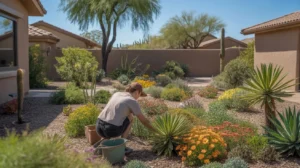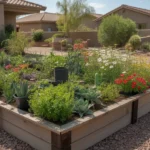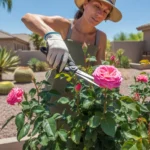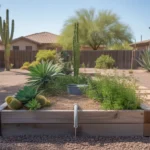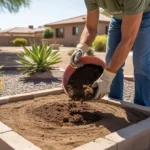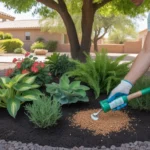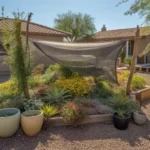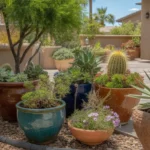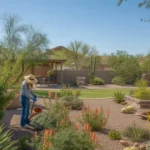Spring has sprung in Mesa, and that means it’s time to roll up your sleeves and get your garden ready for a season of lush growth. With our hot, dry climate here in the Valley of the Sun, spring is the ideal time to prep your soil, plant heat-loving varieties, and set your garden up for success before the intense summer temps arrive. Whether you’re a seasoned green thumb or a budding beginner, these expert spring gardening tips will help your Mesa garden thrive.
Revitalize Your Soil After Winter Dormancy
The foundation of any thriving garden is healthy soil. Over the winter months, even mild Mesa winters, soil can become compacted and depleted of nutrients. Reinvigorate it by working in a few inches of organic compost or well-aged manure. This will improve drainage, add essential nutrients, and create an inviting environment for new plant roots to spread out.
One Mesa gardening expert recommends adding a balanced, slow-release fertilizer while you’re at it. “Look for a fertilizer with equal parts nitrogen, phosphorus and potassium, like a 10-10-10 formula,” he suggests. “This will provide a steady supply of nutrients as plants rev up growth in spring.” Mix in fertilizer according to package directions a week or two before putting new plants in the ground.
Choose Heat-Loving Plant Varieties
When it comes to selecting plants that will thrive in Mesa’s intense summer heat, look for varieties well-adapted to hot climates. Natives and desert-friendly plants are always a safe bet. Some top performers include:
- Desert marigold
- Globe mallow
- Penstemons
- Yellow bells
- Red bird of paradise
- Agave and yucca
For edible gardens, spring is prime planting time for heat-loving vegetables and herbs like tomatoes, peppers, squash, basil, and rosemary. Get them established before daily temps soar into the triple digits.
With any new additions, look for healthy specimens with robust root systems. Avoid plants with yellowing leaves, weak growth, or signs of disease. Careful selection at the nursery saves headaches down the line.
Plant at the Right Depth
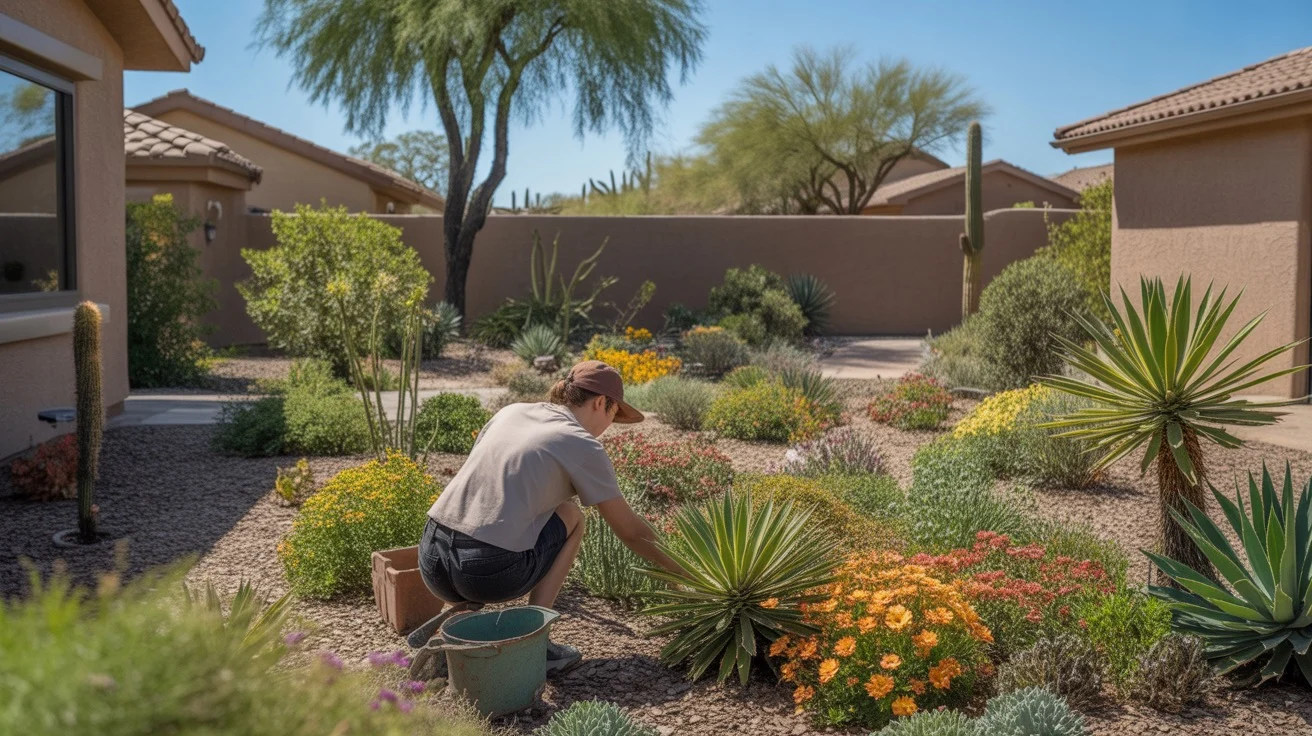
Planting depth can make or break a plant’s ability to establish and thrive. The general rule of thumb is to plant at the same depth the plant was growing in its nursery pot. Planting too deeply can cause stem rot and too shallowly dries out roots.
One exception is tomatoes – they actually benefit from being planted deeply, up to their first set of true leaves. This allows them to develop more extensive root systems along their stems for better nutrient uptake and sturdier plants.
When planting, gently loosen roots if they’re circling the pot, then set plants into well-draining soil. Water deeply right after planting to settle soil around the roots and eliminate air pockets.
Mulch, Mulch, Mulch
In Mesa’s arid climate and intense sun, mulch is a gardener’s best friend. A 3-4 inch layer of organic mulch, like shredded bark or straw, helps retain soil moisture, moderate soil temperature, and suppress weeds. It also breaks down over time, adding organic matter to the soil.
Avoid mounding mulch right up against plant stems, which can trap moisture and cause rot. Instead, pull mulch a couple inches away from stems and trunks, forming a donut shape around each plant.
Prune Wisely
Spring is the ideal time to clean up winter damage and shape many shrubs and perennials. Prune out any dead, damaged, or rubbing branches to promote healthy new growth.
For flowering shrubs that bloom on new wood, like Texas sage and oleander, prune just as new growth emerges in early spring. This encourages vigorous growth and profuse blooming. Wait to prune shrubs that flower on old wood, like cassia, until just after they finish blooming.
Avoid over-pruning, which stresses plants and exposes interior branches to sunburn. Never remove more than 1/3 of live growth at once. Your goal is to maintain natural shape while promoting healthy branching.
Adjust Irrigation as Temps Rise
As spring temperatures climb and plants kick into active growth, irrigation needs increase. Check soil moisture levels frequently and water deeply when the top couple inches of soil dry out. Deep, infrequent watering promotes deeper root growth than frequent shallow sprinklings.
If you have an automated irrigation system, adjust run times seasonally to account for longer, hotter days as spring turns to summer. An easy trick is to group plants with similar water needs on the same valve, so you can fine-tune irrigation to each zone’s requirements.
For maximum water efficiency, water early in the morning when evaporation rates are lowest. Consider installing a smart irrigation controller that automatically adjusts run times based on local weather data.
Keep an Eye Out for Pests
Spring’s fresh new growth can be irresistible to hungry pests like aphids, whiteflies, and thrips. Inspect plants regularly for signs of infestation, like curled or yellowing leaves, sticky residue, or actual insects on leaf undersides.
If you do spot pests, start with the least toxic control methods first. A forceful spray of water knocks many soft-bodied insects off plants. Insecticidal soaps and horticultural oils are other low-impact options. Only resort to stronger pesticides if infestations are severe and aren’t responding to gentler methods.
Remember, a healthy garden is naturally more pest-resistant. By building rich soil, selecting adapted plant varieties, and providing proper irrigation and care, you’ll grow resilient plants that can outpace a few pesky bugs.
With these spring gardening tips in mind, you’re well on your way to cultivating a lush, thriving Mesa garden. A little extra TLC as the season kicks off pays dividends in healthy growth, vibrant blooms, and productive harvests in the months ahead. So get out there, dig in, and enjoy the simple pleasures of spring in the desert.

